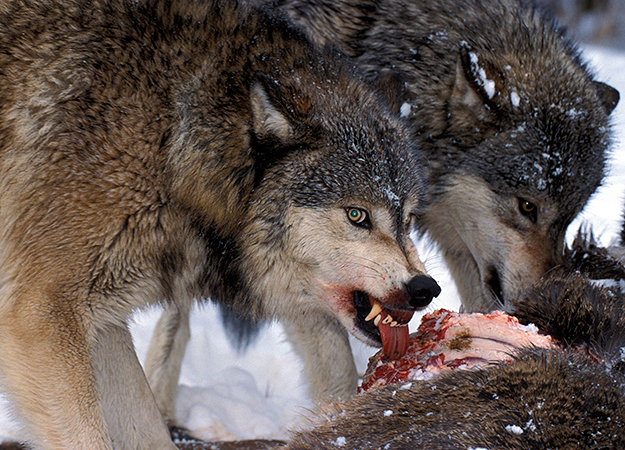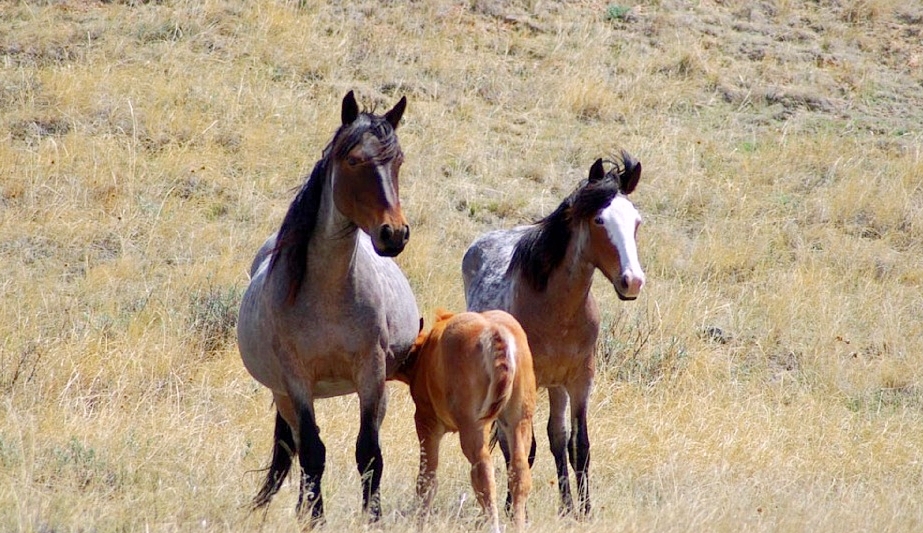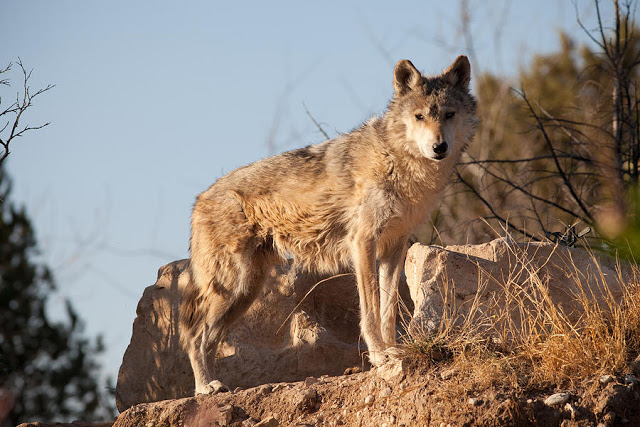Jerome Rosa, executive director of the Oregon Cattlemen’s Association, said the announcement confirms that wolf recovery is on track, and gives ranchers in Western Oregon more ability to address conflicts between wolves and livestock.
George Plaven
Federal plan to delist wolves in lower 48 brings mixed reactions
A proposal to lift endangered species protections for gray wolves across the Lower 48 states is inflaming old tensions between Northwest ranchers and wildlife advocates.
On March 6, Acting Secretary of the Interior David Bernhardt announced the U.S. Fish and Wildlife Service will soon come up with a plan for delisting wolves, returning management to states and tribes.
“Recovery of the gray wolf under the Endangered Species Act is one our nation’s great conservation successes, with the wolf joining other cherished species, such as the bald eagle, that have been brought back from the brink with the help of the ESA,” said Fish and Wildlife spokesman Gavin Shire.
Jerome Rosa, executive director of the Oregon Cattlemen’s Association, said the announcement confirms that wolf recovery is on track, and gives ranchers in Western Oregon more ability to address conflicts between wolves and livestock.
“Hopefully this will add more tools for our ranchers in the rest of the state to control this species that is really growing at a successful rate,” Rosa said.
The Oregon Department of Fish and Wildlife removed wolves from the state Endangered Species List in 2015, allowing for wildlife managers in Eastern Oregon to kill wolves that repeatedly attack livestock under certain circumstances, as defined in the state Wolf Conservation and Management Plan.
Wolves remain federally protected, however, west of highways 395, 78 and 95, limiting ranchers to non-lethal forms of deterrence such as range riders and fladry — lines of rope mounted along fence lines with colored flags that flap in the wind, intended to scare wolves from pastures.
Veril Nelson, a southwest Oregon rancher, serves as co-chairman on the cattlemen’s association wolf committee. He said local producers need the ability to kill problem wolves that repeatedly prey on cows, citing the Rogue pack near Crater Lake that has notched multiple confirmed attacks on livestock over the past year in Jackson and Klamath counties.
“With that wolf pack, killing has become habitual,” Nelson said. “They’re going to keep doing that.”
ODFW spokeswoman Michelle Dennehy said that, if wolves are delisted, the Oregon wolf plan would apply statewide. Western Oregon would begin in Phase I of management rules, which requires four confirmed attacks on livestock within a six-month period before the agency will even consider killing wolves from an offending pack.
Free Range Report
Thank you for reading our latest report, but before you go…
Our loyalty is to the truth and to YOU, our readers!
We respect your reading experience, and have refrained from putting up a paywall and obnoxious advertisements, which means that we get by on small donations from people like you. We’re not asking for much, but any amount that you can give goes a long way to securing a better future for the people who make America great.
[paypal_donation_button]
For as little as $1 you can support Free Range Report, and it takes only a moment.


